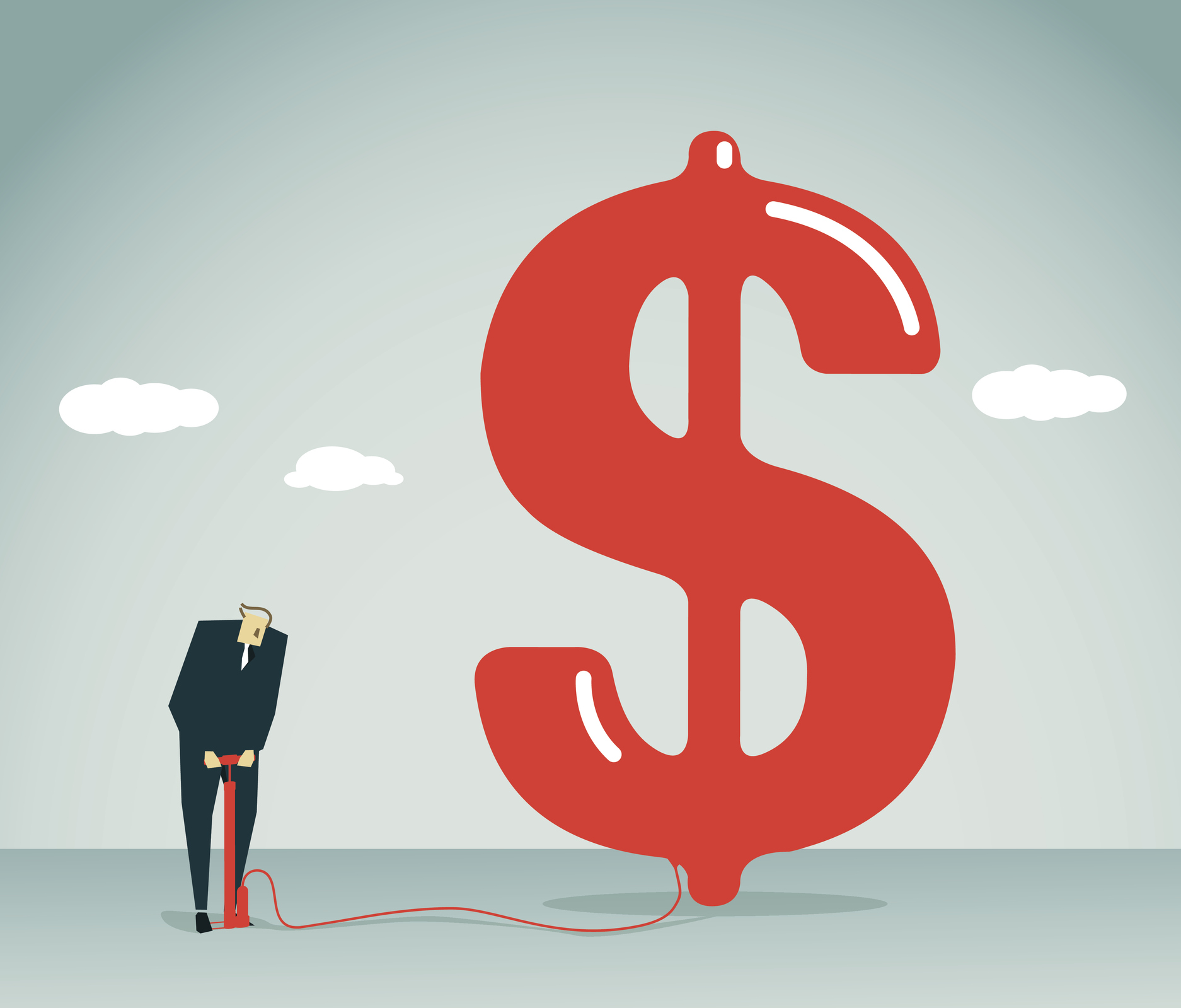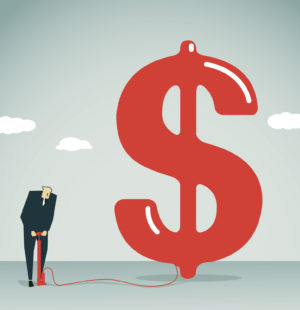The Elephant in the Economic Recovery Room

It. feels. like. everyone. is. talking. about. it. What is “it”, you might ask? Inflation, of course.
As the world’s economies recover and the US economy continues its return to its pre-COVID form, policy-makers, investors and economists have set their eyes on inflation as one of the most significant potential risks to the recovery. Inflation is measured by the Consumer Price Index (CPI) as reported by the Bureau of Labor Statistics. The most recent reading was released this week: CPI rose 0.6% in March, and the index has increased 2.6% over the past year. This represents the highest year-over-year increase since August 2018, and the figure has risen nearly a full percentage point above the trailing 12-month figure reported in February (1.7%).
According to traditional economic models, it would be unfathomable to imagine a world in which the federal government could spend trillions of dollars in a calendar year and for that spending to not cause inflation. And although the current figures seem to indicate prices are going up, if you zoom out and look at prices over a two-year timeframe, price levels in March of 2021 are 4.2% higher than they were in March of 2019, suggesting an average annual increase of about 2% (almost perfectly in line with the target set by the Federal Reserve). But given all the fiscal stimulus and quantitative easing, why haven’t we seen inflation running rampant?
Let’s first state the obvious: COVID-19 caused an unprecedented halt to economic activity around the world, and “stimulus” could more appropriately be defined as “life-support”. The money spent by governments around the world to keep the system functioning as the world scrambled to respond to the pandemic was a major part of what resuscitated the financial markets and enabled the economic recovery we’ve observed since last spring.
With that bit of context out of the way, we can turn this discussion back to those traditional economic models. One of the main sources of upward price pressure comes from the labor market. The closer the economy gets to “full employment” (traditionally measured as a rate of unemployment below 4%), the tighter the labor market becomes. With fewer available workers, the shortage of supply drives the cost of labor (i.e. wages) up. And although the unemployment rate has fallen all the way down to 6% since peaking at 14.8% last year, there’s still progress to be made before reaching the pre-pandemic level of 3.5%.
In addition to the slack in the labor market, the savings surplus from 2020 is playing a role in the lack of inflationary pressure on prices. Americans saved $1.6 trillionlast year, and while economists expect the savings rate to come down over the coming months as the country continues to reopen, one of the effects of fewer dollars being spent has been less upward pressure on prices.
Also, it’s important to note how a globalized economic system changes the calculus of the underlying assumptions about what causes inflation. Traditionally, if a factor of production became more expensive, that put upward pressure on the price of the final good (ex. if the cost of rubber goes up, that makes tires more expensive). In the current system, however, producers can turn to suppliers around the world for cheaper prices; while there may be inflationary pressures in one part of the global economy, it’s unlikely those pressures exist in every corner of the world. And although supply-chain disruptions have been making headlines for more than a year (whether related to COVID or the recent Suez Canal blockage), under the current system it remains true that it’s easier than ever for producers to find the cheapest inputs.
As we’ve mentioned, wrangling inflation is half of the Federal Reserve’s dual mandate (the other half being to manage unemployment levels). The Fed has been blamed for causing recessions in the past as a result of raising interest rates to tamp down inflationary pressures too early in the economic cycle. Last year, Fed Chair Jay Powell shared that the central bank will be taking a new approach: its revised policy is to target an average inflation rate of 2%, and the Federal Reserve will allow inflation to run past the 2% target for a time before taking measures to bring the rate down. Given where things stand, their resolve to let the inflation rate run may be tested, and only time will tell how things ultimately unfold.
If we can be sure of anything, however, we know this: everyone will be talking about it. And for more of our perspective about inflation, tune in to our webinar next Tuesday, April 20th at 2pm ET/11am PT.
For a deeper dive into this topic, we recommend reviewing these articles:
- Emily Stewart, writing for Vox, shares nine questions and answers about inflation that you may have been afraid to ask.
- Larry Light, writing for Forbes, doesn’t think inflation is something we should be worried about at the moment and bases his take on historical context from the past 50 years.
- Mohamed El-Erian, writing for Bloomberg, recently provided his take on three current perspectives about inflation and its potential effect on the economy and markets.
- Matthew C. Klein, writing for Barron’s, put together an article with nine charts summarizing the current state of inflation in the US.
- Dylan Matthews, writing for Vox, provides a primer on Modern Monetary Theory that was written in April 2019 and is timely within the context of the fiscal policies enacted over the past year and the Biden administration’s plans to spend on infrastructure.

